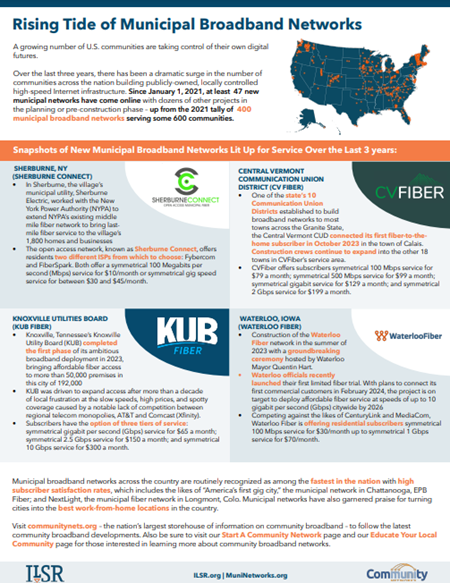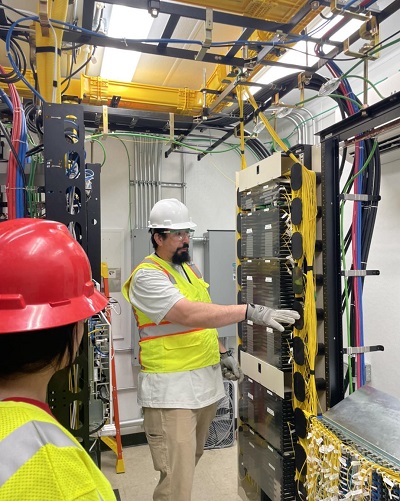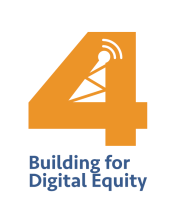
Fast, affordable Internet access for all.

As the municipal broadband movement continues to gain momentum, we created a new fact sheet to highlight the dramatic surge in the number of communities building publicly-owned, locally controlled high-speed Internet infrastructure over the last three years.
In January, we announced our updated tally of municipal broadband networks across the U.S., which showed that between January 2021 and January 2024 at least 47 new municipal networks had been lit up for service.
Our census of new municipal broadband networks comes while dozens of other projects are still in the planning or pre-construction phase, which includes the possibility of building 40 new municipal networks in California alone.
The new fact sheet not only contains pertinent numbers to illustrate the rising tide of municipal broadband networks, it also includes snapshots of four recently launched networks now providing service to communities hungry for high-quality Internet connectivity and competitive choice.
You can find the new Rising Tide of Municipal Broadband fact sheet here.

Community Broadband Resource Pairing
If you missed our most recent Building for Digital Equity Livestream – Life After ACP – the virtual event can still be seen in its entirety (below).
The entire event focused on the imminent end of the Affordable Connectivity Program (ACP) and featured a lineup of speakers who shared on-the-ground perspectives and approaches being adopted at the community level to deal with the broadband affordability crisis in the absence of the popular federal program that has served 23 million Americans since its inception two years ago.
As a bonus, we are sharing links to the speakers slide decks below.
The first of two lightning round speakers, Margaret Käufer – President of The STEM Alliance – gave an overview on the short and long-term work her organization is doing in upstate New York in the face of ACP’s demise. You can find her slide deck here.
The second lightning round presenter Jason Inofuentes – Program Manager for the Broadband Accessibility and Affordability Office in Albemarle County, VA – unveiled an ACP supplement program his office is pursuing and how they see things moving forward. Those slides are here.
The first of the main presenters – Monica Gonzales, Digital Equity Supervisor for Methodist Healthcare Ministries in Texas – gave an overview of what her faith-based nonprofit healthcare organization is doing to address affordable connectivity across the 74 county South Texas region served by MHM. Gonzales’ slides are here.
In a recently published piece in The American Prospect, Sean Gonsalves, ILSR's Community Broadband Networks Initiative Associate Director for Communications, reports on four cities across the U.S. that are well prepared to deal with the demise of the Affordable Connectivity Program (ACP).
The article – titled "The Municipal Broadband Solution" – begins by laying out why Congress created the popular program and how letting the ACP go bankrupt undermines the national "Internet For All" Initiative now underway. However, while digital equity advocates across the nation rightly lament the demise of the program, the focus of the article is on cities that have figured out how to deliver afforable high-quality Internet access even without the ACP.
Here's a few excerpts:
Congress created the ACP to soften a harsh reality: Americans pay among the highest prices for broadband of any developed nation in the world, leaving tens of millions unable to afford internet service—something experts have long noted is a telltale sign of a broken market dominated by monopoly providers, and is at the very heart of why the U.S. digital divide is as massive as it is.
However, although federal lawmakers have known for over a year that the fund would be bankrupt by this spring, GOP congressional leaders have not budged on even bipartisan attempts to save the ACP, prompting the Federal Communications Commission (FCC) to announce in January that the agency was being forced to wind down the popular program.
It’s a major setback for the “Internet for All” effort, especially in light of a recent FCC survey that found 29 percent of ACP beneficiaries would be left without any home internet service whatsoever without the benefit, in an age when internet connectivity is a necessity for meaningful participation in 21st-century society.
Bringing together a nationwide cross-section of leading digital inclusion practitioners, the first Building For Digital Equity (#B4DE) livestream of the year is set to zoom in on the imminent end of the Affordable Connectivity Program (ACP).
Co-hosted by the ILSR's Community Broadband Networks Initiative and the National Digital Inclusion Alliance (NDIA), the popular (and free) virtual gathering will focus on “Life After ACP” – as the FCC continues to wind down the program with the $14.2 billion fund on track to run out of money by the end of April.
Set for March 20, 2024 from 3 to 4:15 PM ET, the lineup of speakers will share on-the-ground perspectives and approaches being adopted at the community level as they work to keep financially-strapped households connected beyond ACP.
While virtual seats for #B4DE fills up fast, registration is still open here.
Here’s the run-of-show:
NDIA’s Amy Huffman will set the table on where things stand with the ACP wind down process before two lightning rounds take center screen.
From Colorado to Texas, municipal broadband providers continue to rack up industry accolades, not just for delivering fiber service–the gold standard of Internet connectivity–but for these networks’ ability to provide ubiquitous access across an entire community at affordable rates.
The National Association of Telecommunications Officers and Advisors (NATOA) recently announced that its Community Broadband Projects of the Year Awards for 2023 will go to the Connexion network in Fort Collins, Colorado and TeamPharr.net in Pharr, Texas.
Awarding Community-Wide Access and Affordability
The Fort Collins award is in recognition for the city having established “a municipal broadband utility created by and for the community to improve the life of all 80,000 residential and commercial properties of Fort Collins through better, more affordable Internet,” NATOA said in announcing the award.

But it wasn’t just because Fort Collins’ network provides city-wide access to fiber. The award also recognizes that “Connexion offers the fastest Internet speeds available at affordable prices (emphasis added) as well as competitive phone and TV services.”

Sean Gonsalves speaks with Dwight Thomas, who build the first citywide municipal fiber network in Texas in Mont Belvieu. They talk about Mont Belvieu as well as the importance of engaging the community and how to make sure people can use the network once it is built. Dwight also discusses his passion for discipleship and sharing his knowledge.
This show is 19 minutes long and can be played on this page or using the podcast app of your choice with this feed.
Transcript below.
We want your feedback and suggestions for the show-please e-mail us or leave a comment below.
Listen to other episodes here or see other podcasts from the Institute for Local Self-Reliance here.
Thanks to Joseph McDade for the music. The song is On the Verge and is used per his Free-Use terms.
On the southern border of Texas in the Rio Grande Valley, Pharr Texas is the home of the largest commercial bridge from Mexico into the U.S. Now, the city is working on building an equally impressive virtual bridge to every home in Pharr with the construction of a municipal fiber-to-the-home (FTTH) network.
The progression has been steady despite pandemic induced setbacks, as city leaders are determined to solve the connectivity challenges in Pharr by leveraging the assets the city already owns while taking advantage of the unprecedented amount of federal funds now available to help communities expand access to broadband. To that end, the city has created regional partnerships, completed a feasibility study, and launched a pilot project. Now, Pharr officials are moving ahead with the construction of a city-wide municipal network.
Wake Up Call in Rio Grande Valley
Pharr has a population of almost 80,000 people of which 94 percent identify as Hispanic or Latino with over 30 percent of families living below the poverty line. Their public meetings are often bilingual. But, it was in 2015 that the Federal Reserve Bank of Dallas reported that the Rio Grande Valley was on the wrong end of the digital divide. The report also highlighted the impact that had on the communities in the region:
The study involved focus groups with colonia residents. One theme that arose from the conversations with residents was the lack of access to the internet. The report found that the digital divide was a factor preventing residents from accessing regional labor market opportunities. Additionally, the report described the challenges colonia students face in school because of their inability to complete homework assignments due to lack of internet service and computers at home.
When earlier this week ILSR caught up with Jordana Barton Garcia, author of the report, she explained that “colonias” are informal neighborhoods where people live with no (or limited) infrastructure. Residents are sold lots without existing infrastructure, from water to broadband.

This week on the podcast, Christopher is joined by ILSR colleagues Sean Gonsalves (Senior Editor and Communications Team Lead) and DeAnne Cuellar (Outreach Team Lead) for a roundup of recent news. They talk about the release of our new tracking and advocacy tool, the Affordable Connectivity Program dashboard, the pace and speed of the municipal broadband build in Pharr, Texas, pilot program aimed at low-income households in Syracuse, New York, Boulder, Colorado's broadband plan, and Erie County, New York's revived connectivity plan.
This show is 33 minutes long and can be played on this page or via Apple Podcasts or the tool of your choice using this feed.
Transcript below.
We want your feedback and suggestions for the show-please e-mail us or leave a comment below.
Listen to other episodes here or view all episodes in our index. See other podcasts from the Institute for Local Self-Reliance here.
Thanks to Arne Huseby for the music. The song is Warm Duck Shuffle and is licensed under a Creative Commons Attribution (3.0) license.

This week on the podcast, Christopher is joined by two representatives from Pharr, Texas (pop. 79,000), which has embarked on a citywide fiber-to-the-home (FTTH) network build that is seeing strong local support and fast progress in recent months. Jose Pena is the IT Director for the city, and and Guillermo Aguilar works as a Partner at Brownstone Consultants, which is serving as a project manager for the network build. Jose and Guillerma talk with Christopher about the impetus for TeamPharr, the municipal effort which formally kicked off in 2017 with a feasibility study.
Jose and Guillermo share how the city moved to a fixed wireless pilot project on the southern part of town a few years ago before extending the network to a collection of city parks and then making the commitment to a full citywide buildout in 2020. They detail their early work in the state, which places some barriers in front of communities looking to take their telecommunications future into their own hands, and the help they got from Mont Belvieu (which also runs its own network). Jose and Guillermo share the phenominally fast progress the team has made, from finishing the design phase in September of last year, to connecting the first household in January 2022, to passing 70 percent of premisestoday.They also talk about their work to offer subscribers low pricing tiers ($25 and $50/month for symmetrical 500 Mbps and gigabit service, respectively) and their efforts to help households sign up for the Affordable Connectivity Program.
Check out the videos at the bottom of this story for more about why Pharr undertook the project and the progress the city has made so far.
This show is 40 minutes long and can be played on this page or via Apple Podcasts or the tool of your choice using this feed.
Transcript below.
We want your feedback and suggestions for the show-please e-mail us or leave a comment below.
Listen to other episodes here or view all episodes in our index. See other podcasts from the Institute for Local Self-Reliance here.
Thanks to Arne Huseby for the music. The song is Warm Duck Shuffle and is licensed under a Creative Commons Attribution (3.0) license.